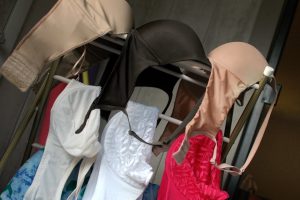The interior of CHIJMES Hall looks nothing like Crazy Rich Asians because it’s not a flooded paddy field. Garish yellow light from the chandeliers take away the post-production magic, giving the vibes of a budget wedding banquet. It feels a lot smaller on the inside than the outside, mostly because of the long catwalk cutting down the middle of the hall.
Wait, catwalk? You see, I’m in CHIJMES for an NUS Pageant.

You might be envisioning young women in florid dresses or scanty bikinis competing for the title of Miss [Insert Country]. But university pageants are a different beast altogether.
Most collegiate pageants are a part of freshman orientation. Thus, they are first and foremost envisioned as bonding and relationship-building activities. Participants—more commonly known as ‘bashees’, after the word ‘bash’—are often scouted during a faculty or hall’s orientation camp. Then, they are paired up in male-female couples, and normally represent a certain house or orientation group for non-bashees to rally behind.
As such they are events organised by students for students, not rich old men potentially exploiting young women. Some of them are part of your typical dinner and dance event, serving as entertainment.
They also tend to be more PG than your typical adult beauty pageant. Given the damage of a single kukubird cheer, the oversexualisation of kids barely out of pre-tertiary/army is not a good look.
While there may be a beach or swimwear segment, the showing of skin is based on participants’ level of comfort. In addition, these segments have been phasing out over the years (unless you’re SMU Waikiki, beach-themed and inevitably centered around swimwear).
Given how the problematic aspects of adult pageants are mostly absent, why do many still cringe at university pageants? Why the bashing of the bash?
22 year-old student Sheryl* tells me it’s because pageants are at their heart, superficial. In the end, it’s just a bunch of beautiful people strutting about on stage. She admits that there’s some jealousy involved, but there’s the impression that only narcissistic people join pageants.
“Singaporeans tend to be paiseh and it takes a certain kind of person to put their face and body out there,” she says. “People like influencers.”
Given Singaporeans’ unbridled dislike of influencers, the link of pageants to their industry explains why there’s so much hate. After all, many bashees get free stuff and have to pose with products on their Instagram, the hallmarks of an influencer lifestyle.
She tells me about people she knows who have joined such pageants out of wanting to get popular. New school, new me, why shouldn’t I reinvent myself to increase my social capital?
Sheryl understands the want to be surrounded by gorgeous peers, living a life of pseudo-luxury and being sent more products than you can consume.
“But many are going to resent that opportunistic attitude,” she sighs.
So, are university pageants just influencer incubators? Is there any other reason they still exist?

But she tells me that pageants should use the platform in a responsible and conducive manner, to elevate not just the bashees, but move beyond that. Miss Universe Singapore has their own charity segments, so why shouldn’t pageants promote the causes they believe in?
Heather shares that ever since Arts Mode rebranded in 2017, there has been a conscious effort to be a hub for influencing fashion. They tried to explore outside of heteronormative ideals by having suits for the girls during the formal segment.
“It didn’t pan out,” she sighs. “Not everyone can pull off that androgynous look, and we were already struggling with logistics for the guys’ suits. The whole thing’s a shot in the dark—sometimes you make it, sometimes you miss.”
One of the hardest and often unseen parts of running a pageant is getting sponsorships. While the college partially funds the event, a lot more is needed for the event to materialise.
Heather tells me how similar it is to event planning. I learn about NUS’ own restrictions on sponsors—no alcohol brands, for instance. Many brands are also reluctant to work with pageants because they’re ultimately an educational institution, and the university demographic is very small.
“You can send out hundreds of emails and get nothing back,” she shrugs. “But the most receptive brands are the ones who already work with influencers.”
That said, Heather immediately dispels the myth of influencer incubation.
She explains that while there are influencers, many of them achieve their status or career independently from these bashes. Sponsors may occasionally reach out to bashees to do a shoot, but modelling experience and having a thousand followers do not an influencer make. Most of them carry on with their lives as average university students without getting into the industry.
“But influencing itself isn’t inherently a bad thing,” Heather challenges. “What counts is your integrity. Do you work with brands you believe in?”
There’s a twitch in her expression, as she reveals that it’s not as easy to stick to your convictions. She measures her words as diplomatically as possible.
“I’m not completely satisfied with the brands we worked with,” she confesses. “I believe in supporting and uplifting local designers and brands, and giving them a platform to showcase their work. We didn’t manage to do that as much as we’d like to. Sometimes you just have to compromise.”
But as much as possible, they involve homegrown talent and collaborate with people from the campus community. For example, Sheares Beats often spins for Mode, and various hall bands make a showing to perform. One of last year’s photographers, Kenneth Power, is also a student from FASS.
Heather sips her coffee, hopeful for the future. She tells me that there’s a lot of potential for change because the formula is so standardized. That this year’s Mode is aiming to shake things up, be more experimental.
Maybe I’ll understand the appeal if I pay them a visit.
The Rehearsals

The 4 couples each represent the A-R-T-S houses. In order, we have Abigail and Amir, Shannon and Jovin, Asyura and Immanuel, Chyi Yen and Andrew.
As they begin practising their mass dance routine, I pull aside a few committee members to get a handle on this year’s pageant.
“My friend Gerald*—Head of Creative—brought me on,” Ash* tells me. “He joined Arts Mode last year because he thought it’d be creative and exciting, but it was mostly like every other pageant.”
It’s refreshing to know that bashees acknowledge that state of their ‘industry’, that not all of them have heads up their arses.
She leans into me conspiratorially. “He felt it was something he couldn’t be proud of,” she shrugs. “And it was very Chinese! So we’re doing our best to change it this year. ”
Looking at the makeup of both bashees and committee, I have to admit that Mode 2019 is one of the more racially diverse pageants I’ve seen.
“They’re not just tokens,” Ash giggles. “They’re all super attractive and fun!”
She shares the judgement from her friends when she reveals that she’s working on Mode. But Ash believes that changing the face of collegiate pageantry is a worthy cause. That they aren’t defined by their negative stereotypes, and that there’s a lot of untapped potential in the format.
To show me that there’s a case for their continued existence, she unfurls the theme for this year’s Mode: Transmigration.
I’m saddled with a twenty page brochure-cum-moodboard that delineates everything from grand mission statements to the details of fabric and patterns. I look helplessly to her for help in deciphering.
Ash explains that they wanted to show that a pageant can be a platform for creative expression, to break out of its rigid conventions to feature fashion that can tell a story.
Split into 3 categories, Transmigration is about journeying from one place to another, of reinvention and the hardships needed to weather such a transformation. These themes are also set against the sociopolitical backdrop of migrants and refugees in an intimately connected world that’s seen a resurgence of borders and nationalism.
On the topic of sponsors and brands, Ash nods as I relay Heather’s vision to her.
“We’d love to work not just with local brands, but those with good environmental practices, labour practices etc. But alas.”
She shrugs, and we both mourn the death of ethical idealism in our world of late capitalism.
Still, she’s content with this year’s sponsors. Toxic Friends Co, Refined Supply, Ferne Atelier, and Marquee are some of the Singaporean businesses working with Mode.
“It’s all coming together,” Ash exhales, as we watch the bashees struggle to sync their movements. “I’m proud of what we’ve done and I hope they can say the same.”


But they don’t seem to mind. This year, I spot at least 7 of them, and generations of bash alumni often return to help or offer support.
“We’re all really good friends outside of Mode,” Daniel, the Head of Publicity tells me. “We even go on holidays together!” he laughs, and some Instagram stalking confirms the squad pilgrimage to Good Vibes Festival.
Despite knowing each other for barely over a month, I can believe the camaraderie blooming amongst the current bashees.
During breaks, Immanuel skitters around, feeding his friends take away dinner from the committee. Jovin carries a bouquet of water bottles as he helps the group refill. The girls play some bizarre variation of hopscotch, and after noticing me watching, awkwardly stop and look away (imagine someone splayed like a starfish on the ground, with people jumping between the gaps made by the limbs).
“Something like this is a once in a lifetime experience,” Jovin tells me when I ask why he agreed to join.
“I wanna be in charge of Creative next year,” Shannon grins, already looking to be Gerald’s successor. “But it’ll be very hard to top this. The committee have done a great job, and I couldn’t be prouder to be a part of this.”
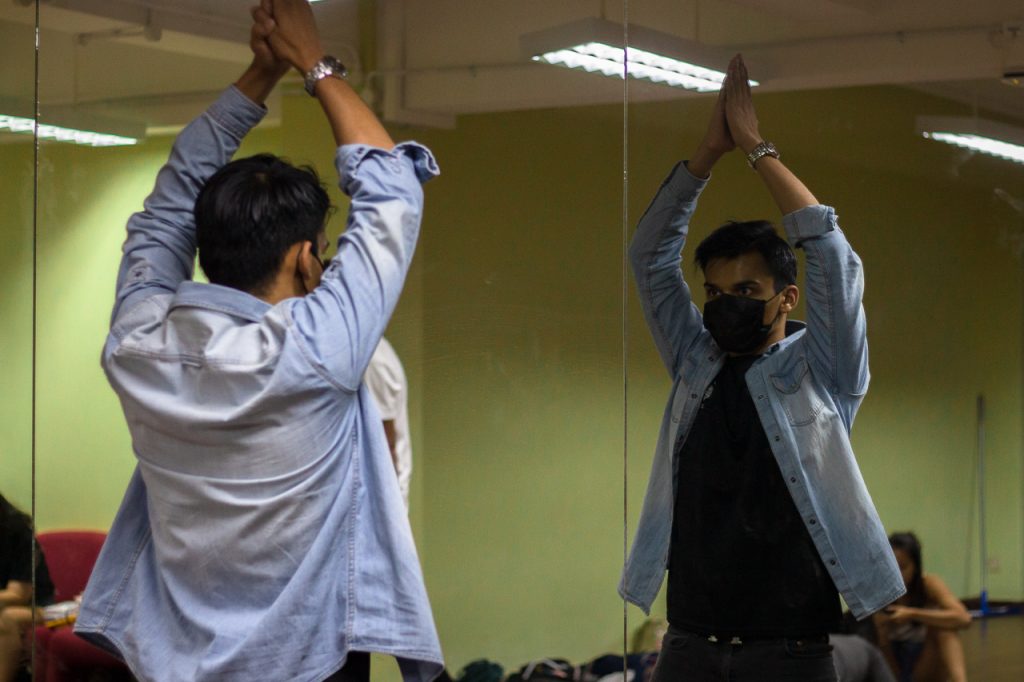
The one thing that CHIJMES isn’t lacking in is its height. Like all cathedrals, the ceiling yawns open and gives the space a grandeur even in its intimacy. The venue choice shows how Arts Mode 2019 aims to elevate collegiate pageantry the same way Masterchef home cooks are tasked to elevate various dishes.
The crowd starts trickling in, greeted by complimentary bags of Famous Amos. It takes a solid hour from the doors opening and thirty minutes after the stipulated starting time before the hall fills up. Ah, to be youthful and perpetually late.
The chandeliers dim, and we’re in business.
First Half
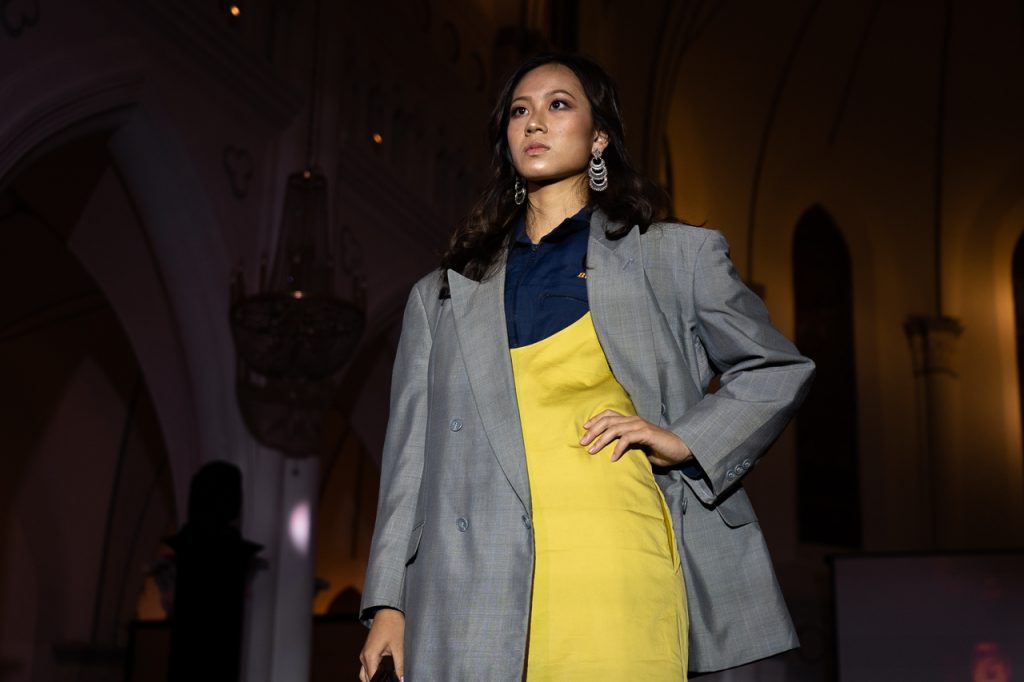
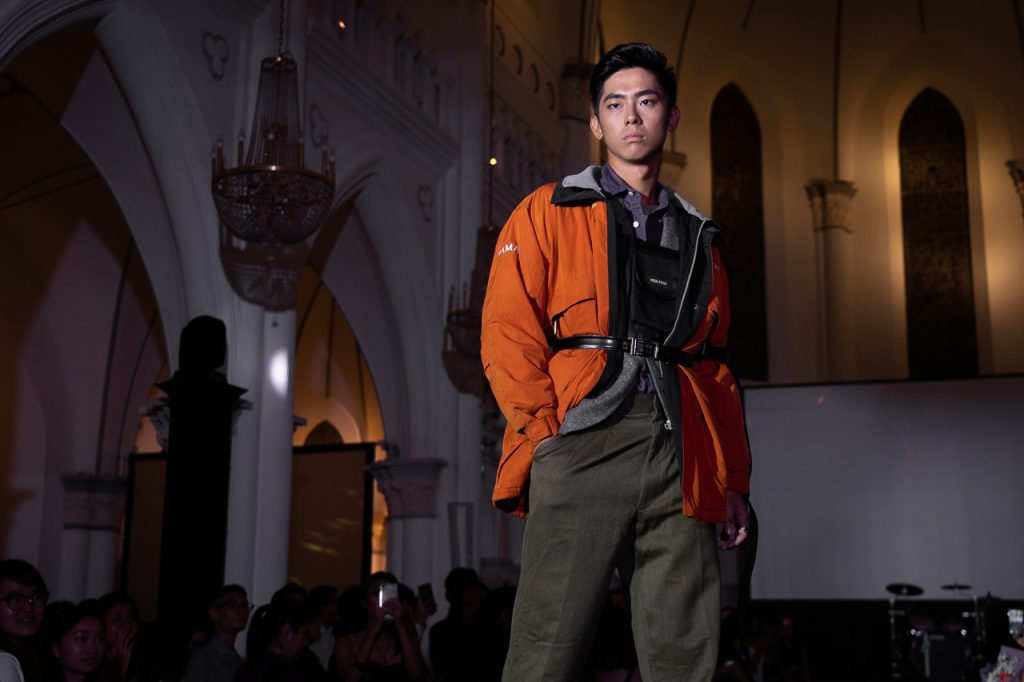
As Abigail makes her grand entrance, there’s no doubt that Transmigration is a pageant in its own league. Unlike usual themes like ‘casual’, ‘beach’, or ‘retro’, the stylistic choices cannot be described as anything but avant garde.
For Departure, the aesthetic is grimy, rugged, industrial. Think of post-war refugees stumbling into 1920s Birmingham. Labourers covered in soot ready to board a cross-continental train in the hopes of a better life. Sophistication and poise despite being ground down by the rhythm of the city, gasping to hold onto a breath of dignity.
These are the ideas conveyed through cloth, through colour, through posture.
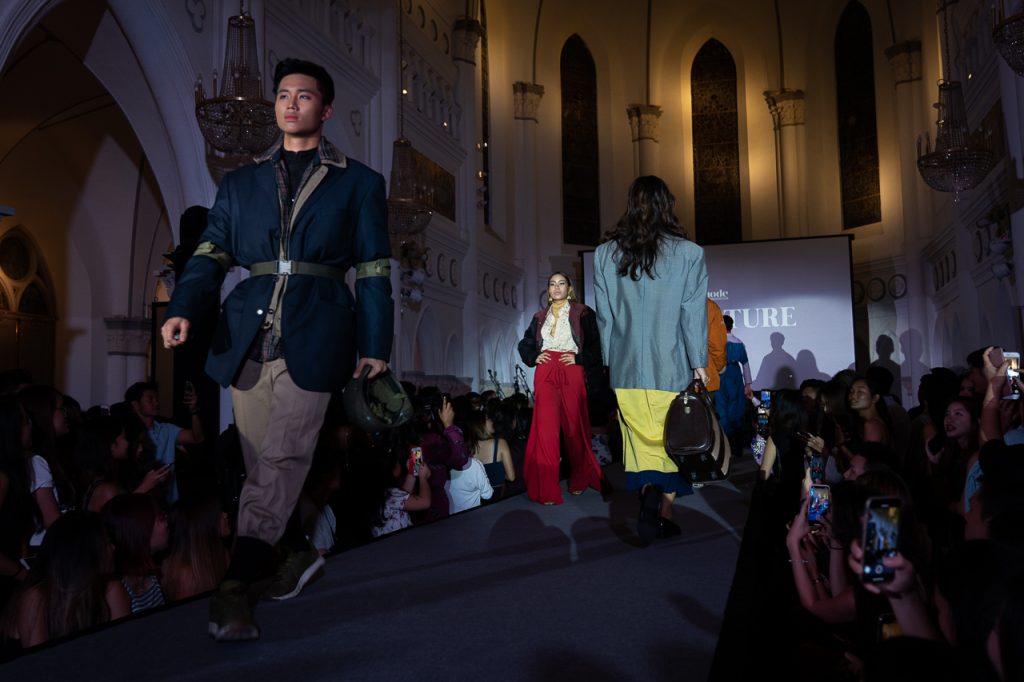
What do we have? A freestyle routine channeling Michael Jackson and a Disney Channel musical extravaganza. An intentionally off-tune cover of ‘Slow Dancing In The Dark’, followed by a theatrical make-up-or-break-up couple dance.
Through boisterous laughter and applause, the audience remains entertained, and the night buzzes with excitement.
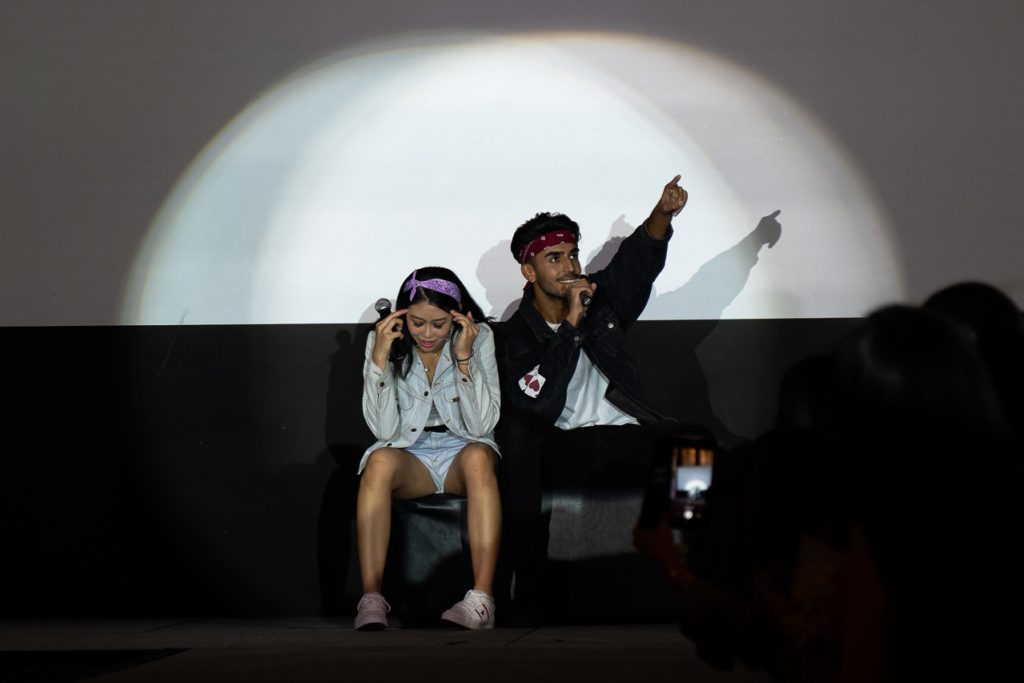
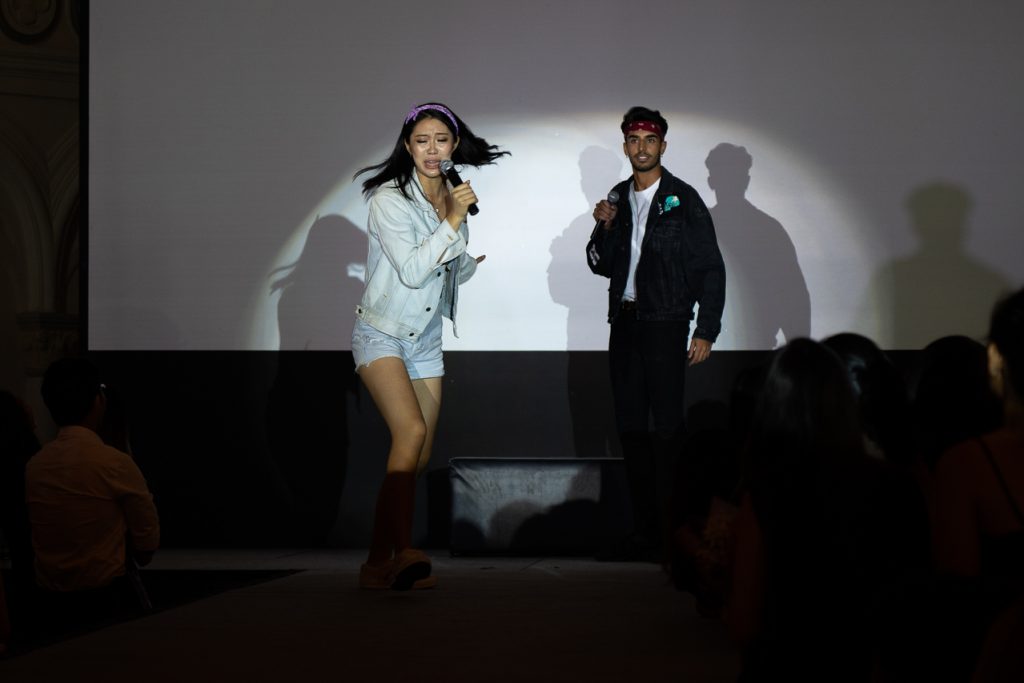
Exploration imagines the journey itself. A voyage on the choppy seas, braving thunder and tempest while clinging to a lifeboat. Waterproof fabrics, striking coloured patterns, and an assortment of expedition gear dominate the set—among which, the floaties around Shannon’s arms never ceases to amaze me.
Chyi Yen smarts with an angle that could cut glass. Jovin lets out a knowing smirk as he turns around.
The crowd goes wild.
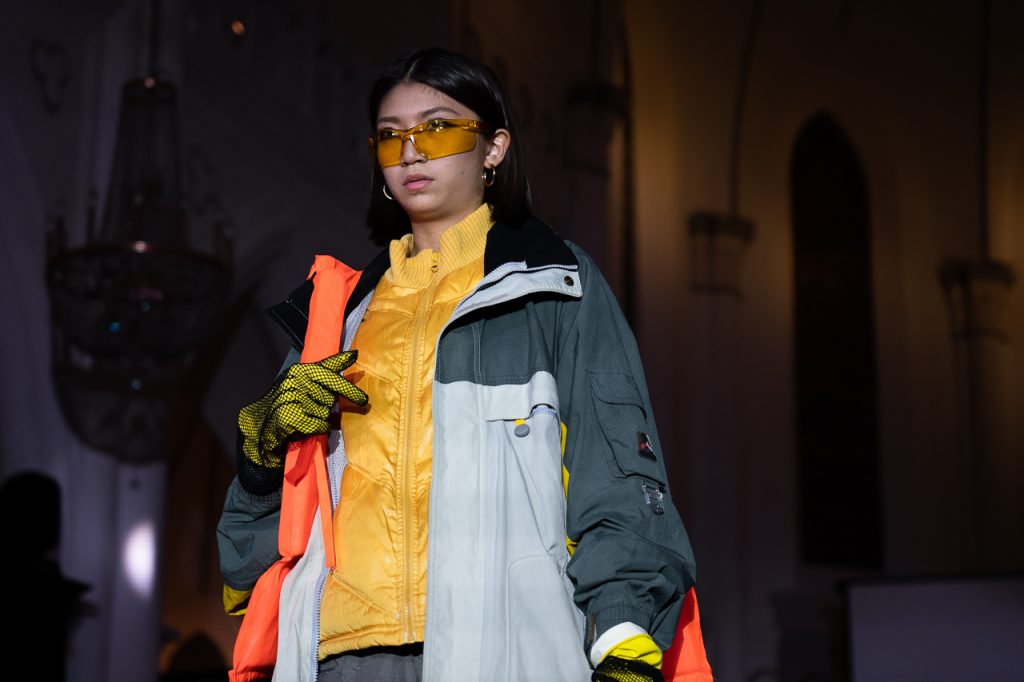
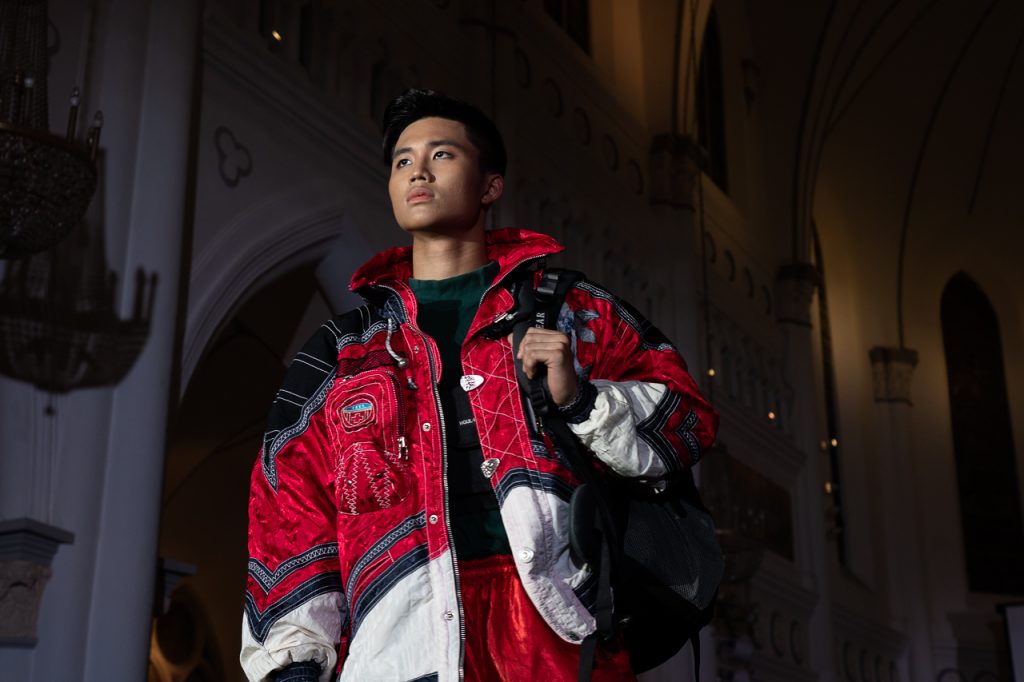
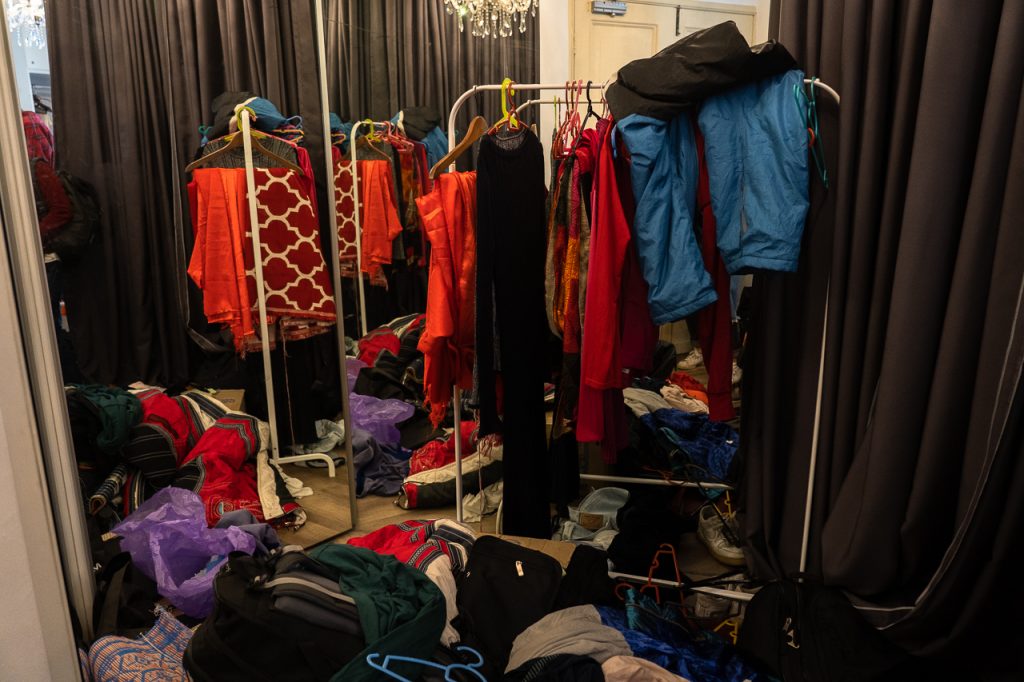
It’s one of the smallest backstage areas I’ve ever been in. People are constantly streaming in and out because of how cramped it is, and I watch Immanuel and Asyura leave to rehearse as they’re the next act.
Skirting past the heap of clothes on the floor, I ask the remaining participants about their feelings on what they’ve done, and what’s to come.
Their responses fluctuate between relief, exhilaration, and disappointment. But the show goes on, and they begin to prepare for the rest.
“I’m ready to be kicked out of CHIJMES,” Andrew chuckles. He smooths the creases in his pink shorts, which he’ll be taking off in his performance to reveal a pink skirt. All this, while dancing to Taylor Swift’s ‘You Belong With Me’. Peak quality content.
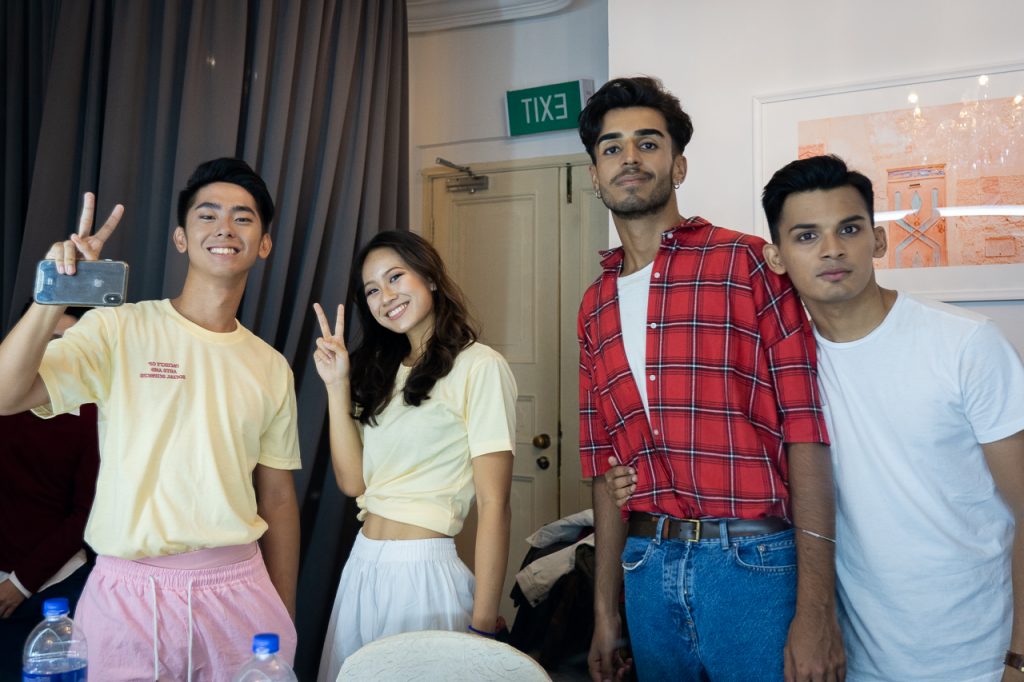
Immanuel puts on his jacket with swagger, looking at himself in the mirror as he replies.
“Good.”
“I don’t know,” Asyura murmurs, eyes cast to the ground. She mimes slicing her neck. “Super nervous.”
“We’ve done it so many times before,” Immanuel tells her. “We just have to do it out there one more time.”
He stares out of the dressing room towards the stage, his expression inscrutable.
“Do you trust me?”
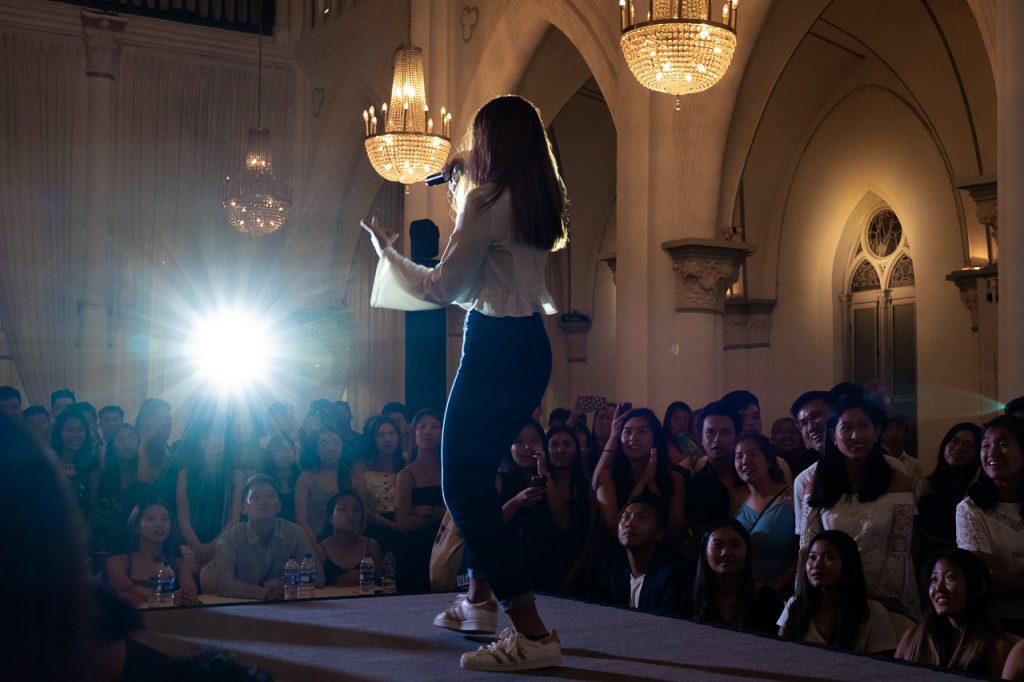
Second Half
We haven’t talked about the most important part of the event: the audience. Remember that this is an orientation event. We’ve seen how bonded the bashees are, but can the same be said for the larger community?
The rowdy crowd remains fiercely loyal to the bashees they’re here to support. Whether they’re orientation groups, hall mates, or secondary school friends, each bashee has friends and family showing up. I spot a parade of signs and cardboard cutouts of Andrew’s face, and a group of Abigail supporters behind me shriek whenever their golden girl commands the stage.
A cheer competition erupts during an emcee segment, each of the A-R-T-S houses coming out in full force. As they scream out their lungs, I’m shown how nothing forges team spirit better than good old friendly competition.
Has the pageant fulfilled one of its primary objectives of fostering a sense of belonging in FASS’ new freshmen?
You know the answer.
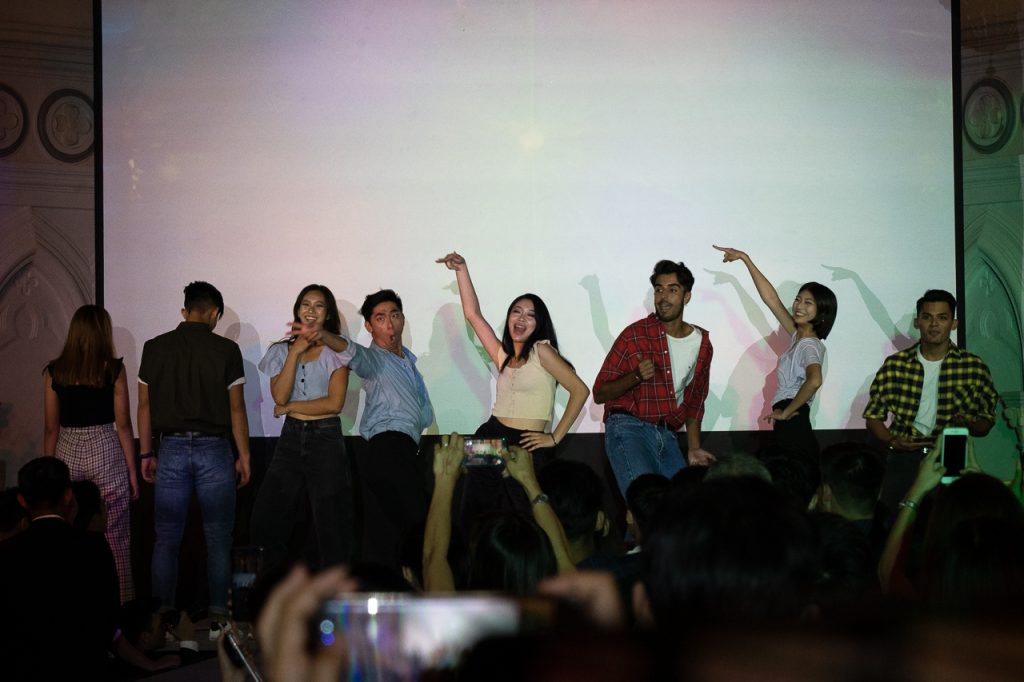
Amir has the aura of a princely monk from Rivendell. Shannon is Singapore’s answer to the Mulan live-action remake. They each exude the sublime, transcendental feeling of having made it.
As the eight of them line up on stage after the closing reprise, I know that the night’s coming to an end.
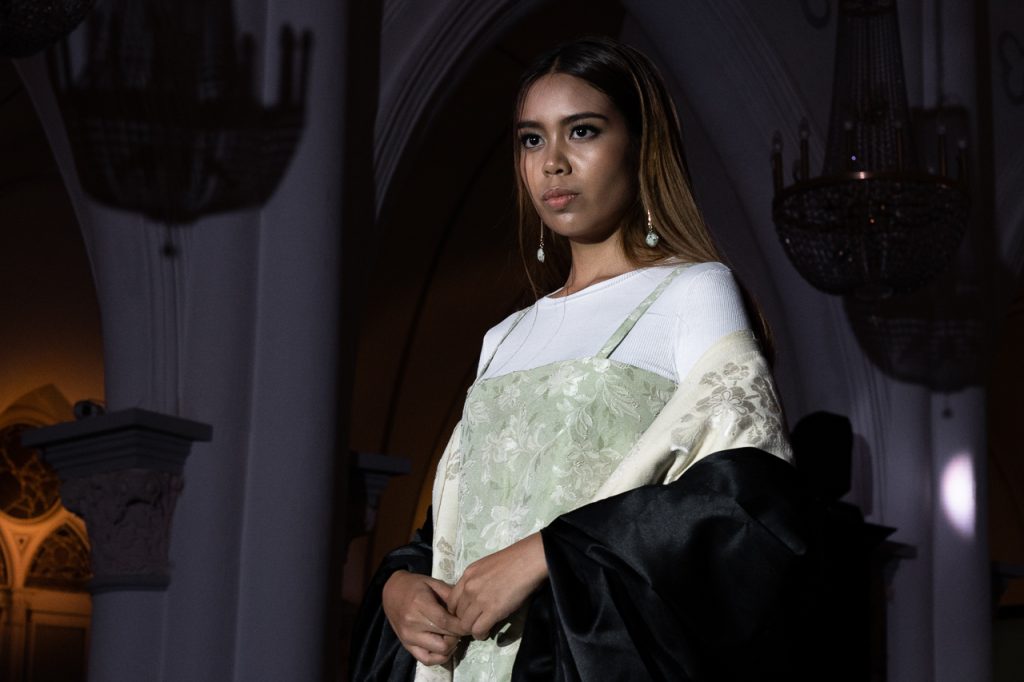
So, why do pageants still exist?
“It has to do with legacy and continuing,” Heather tells me. “We are still narcissistic on the inside, even if it’s a little bit, and people want to see a show. That’s fine. It’s okay to indulge.”
This? Tonight was an amazing show.
But beyond a single night, these pageants form the foundation of a community, a long lineage of bashees bonded by common experience. People keep coming back, and friends will always turn up because we want to celebrate what our loved ones are passionate about.
In the end, a King and Queen are announced to resplendent applause. A host of titles and awards are conferred onto a new pantheon who will step up to their thrones.
But the crowning achievement of Arts Mode 2019 is pushing the boundaries of the humble orientation pageant to new heights. If these platforms are a ‘model’ to influence the student body, a new ‘progressive pageant’ reflects the values that our youth hold today. Under the spotlight on a stage, sociopolitical and cultural issues from ethical consumerism to gender roles can be expressed and explored through performance. Organisers, bashees, and audience can negotiate a foundation for thinking about these issues, and move beyond the superficial.
As norms change, so will the institutions that uphold them.
Mode 2019 proves that you can have a pageant that’s representative of your community, and conscious of social issues. That pageants can uplift local brands, create lasting relationships, and be challenged creatively to have an overarching thematic and narrative structure.
We’ve been given new impetus for why pageants should still exist.
Arts Mode 2019 set out with the theme of Transmigration. Of journeys, new beginnings, and rebirth. May their legacy usher in an era that will reign for years to come.
The college pageant is dead. Long live the college pageant.

Inspired to dress up and do an interpretive dance on the climate crisis? Tell us how you’d strut down stage at community@ricemedia.co.





